 "ttyymmnn" (ttyymmnn)
"ttyymmnn" (ttyymmnn)
03/20/2018 at 12:35 • Filed to: wingspan, planelopnik history, Planelopnik
 11
11
 21
21
 "ttyymmnn" (ttyymmnn)
"ttyymmnn" (ttyymmnn)
03/20/2018 at 12:35 • Filed to: wingspan, planelopnik history, Planelopnik |  11 11
|  21 21 |
!!! UNKNOWN CONTENT TYPE !!!
Welcome to
This Date in Aviation History
, getting of you caught up on milestones, important historical events and people in aviation from March 17 through March 20.
!!! UNKNOWN CONTENT TYPE !!!
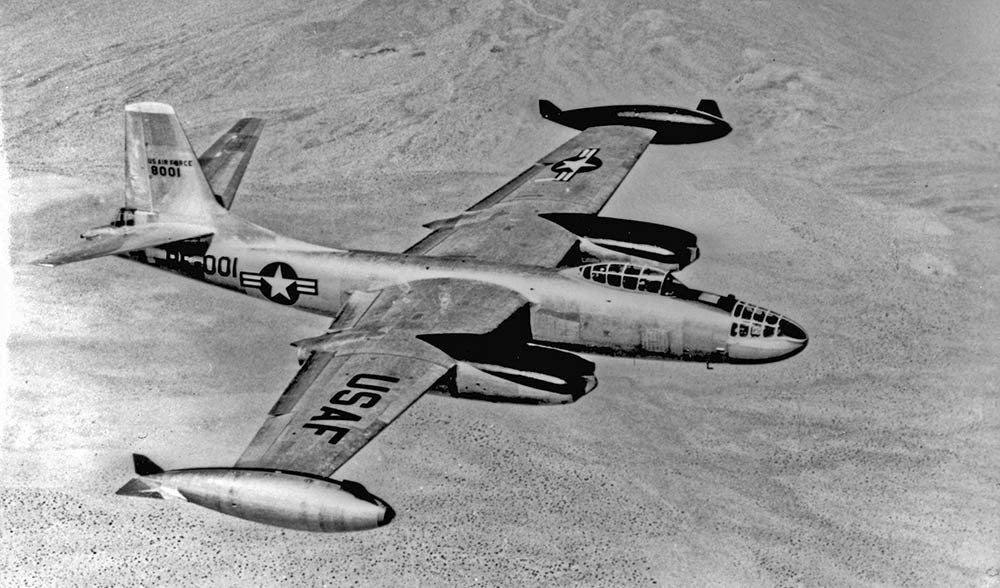
North American B-45C Tornado (US Air Force)
NMarch 17, 1947 – The first flight of the North American B-45 Tornado. By the later stages of WWII, the arrival of jet-powered German bombers had the Allies scrambling to develop their own. The Luftwaffe had already fielded the world’s first operational jet bomber, the !!!error: Indecipherable SUB-paragraph formatting!!! and though it was only built in limited numbers, it was clear that the future lay in jet power, and that the US needed to work quickly to develop a bomber of their own. Work of the Tornado began in 1944 with a requirement from the US War Department for a new jet-powered bomber and, following submissions from several companies, the North American NA-130 was chosen as the winner on September 8, 1944.
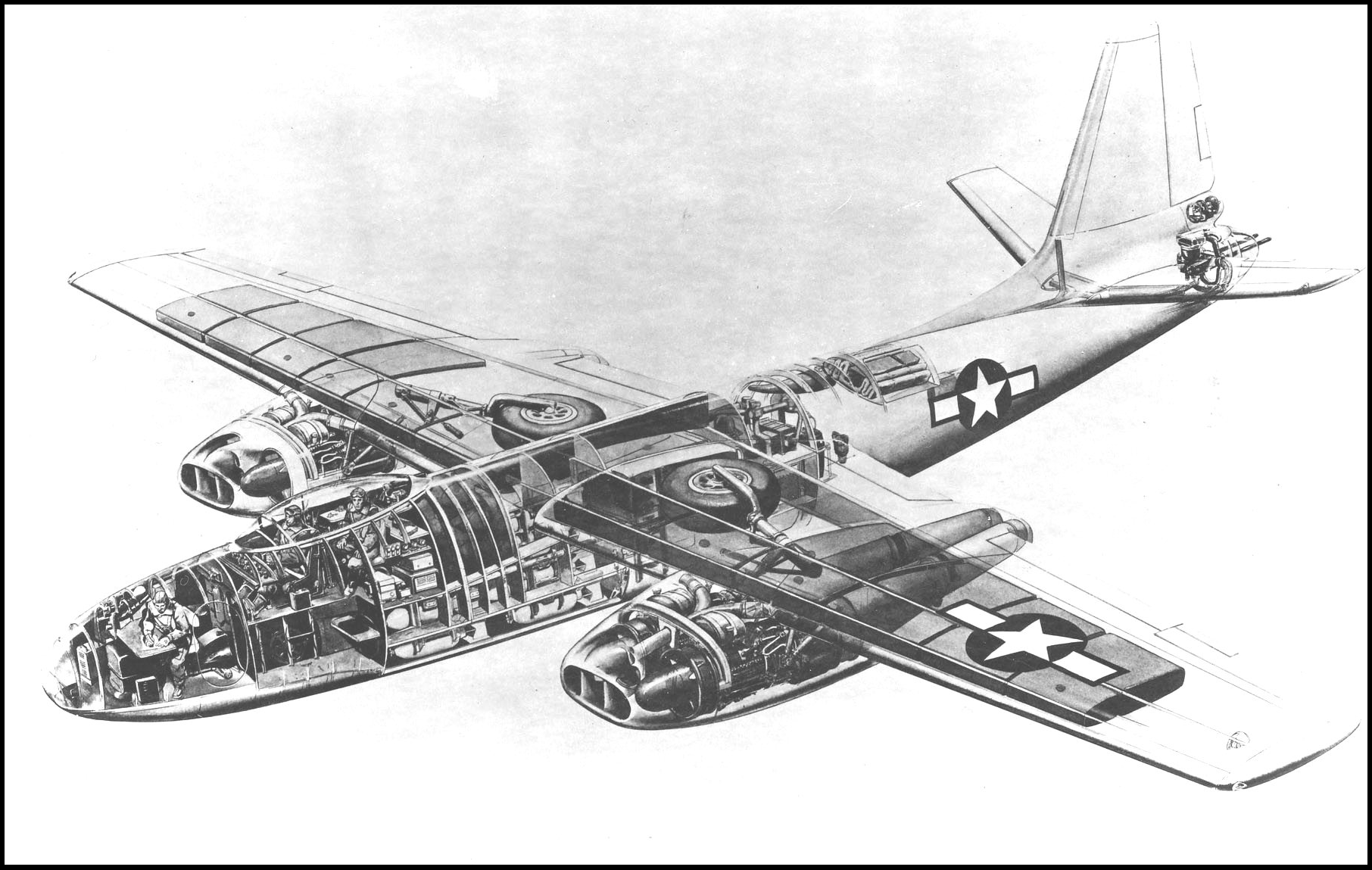
Cutaway of the prototype XB-45 (US Air Force)
The idea of using a swept wing dates back to before WWI, but it early experimentation was driven by a desire to increase stability. By the 1930s, the Germans had begun to investigate the swept wing to reduce high-speed drag, but it wasn’t until after the war that captured German data made its way to the United States. Thus, the B-45, like many other early jet aircraft, still employed straight wings, and would not have looked out of place if it were given propeller engines. The Tornado was powered by four !!!error: Indecipherable SUB-paragraph formatting!!! turbojets housed in nacelles in the wing, and had a maximum speed of 570 mph with a range of 1,000 miles, and could carry up to 22,000 pounds of bombs. It was also armed with two .50 caliber machine guns in the tail for defense against fighters. The B-54 had a crew of four: pilot, co-pilot, bombardier-navigator and tail gunner
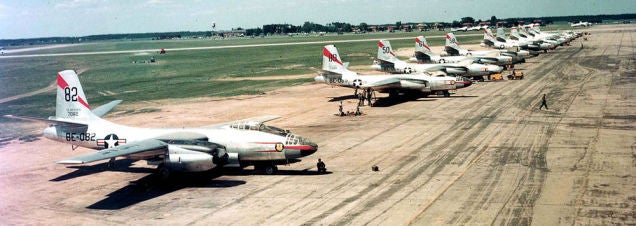
North American B-45 Tornadoes of the 47th Bombardment Wing on the tarmac at Langley Air Force Base in 1952. (US Air Force)
By the end of WWII, technological advancements were beginning to outpace development and production plans of many fighter and bomber programs. With the !!!error: Indecipherable SUB-paragraph formatting!!! starting to heat up, the Air Force placed special emphasis on nuclear-capable bombers, and a decision had to be taken whether to produce the B-45, or the !!!error: Indecipherable SUB-paragraph formatting!!! , which was similar to the Tornado in many respects, though much larger. After an evaluation, the B-45 was chosen as the better aircraft, and North American received a contract to produce the B-45 beginning in January 1947. But the Tornado soon became a victim of underpowered engines and the rapid advances of bomber technology. The !!!error: Indecipherable SUB-paragraph formatting!!! , which benefitted from captured German data on swept wing design, took its maiden flight less than a year after the Tornado, and offered greater speed and almost twice the combat range. Postwar budget restrictions also meant that the Air Force would have to limit the number of projects it could develop, and with the B-47 looming on the horizon, production of the B-45 was cut, resulting in a final production run of 143 aircraft. Nevertheless, the Tornado holds the distinction of being America’s first operational jet bomber and the world’s first multi-jet engined bomber to be refueled in midair.
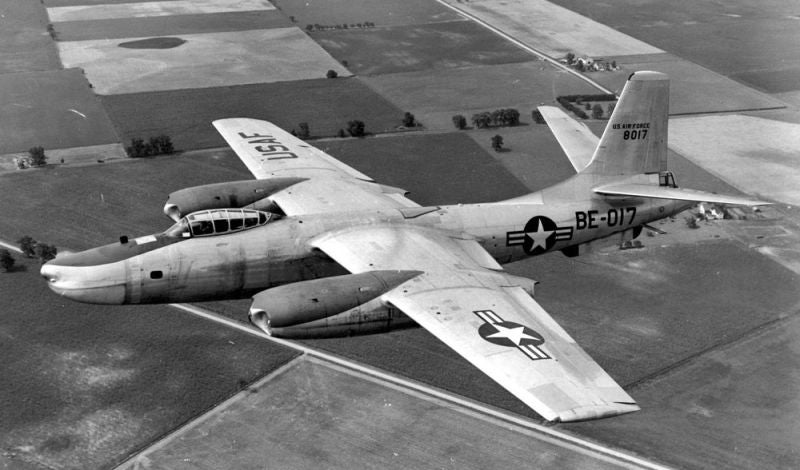
RB-45C reconnaissance aircraft. Note the solid nose and camera ports (US Air Force)
Despite its relatively short service life, the Tornado filled an vital gap in America’s and NATO’s nuclear deterrence force, particularly during the Korean War, when so many military assets had been sent to Asia. In 1952, B-45s were modified to carry nuclear bombs and sent to England, and the RB-45 reconnaissance variant provided valuable intelligence over Korea, where they complemented older !!!error: Indecipherable SUB-paragraph formatting!!! piston-powered reconnaissance aircraft that had proven vulnerable to enemy jet fighters. After the war, the Tornado made some overflights of the Soviet Union, but those missions were soon taken over by the !!!error: Indecipherable SUB-paragraph formatting!!! (the American-built !!!error: Indecipherable SUB-paragraph formatting!!! ), which could fly at higher altitudes. The B-45 was removed from active service by the end of the 1950s, though some served for a few more years as test aircraft.
!!! UNKNOWN CONTENT TYPE !!!
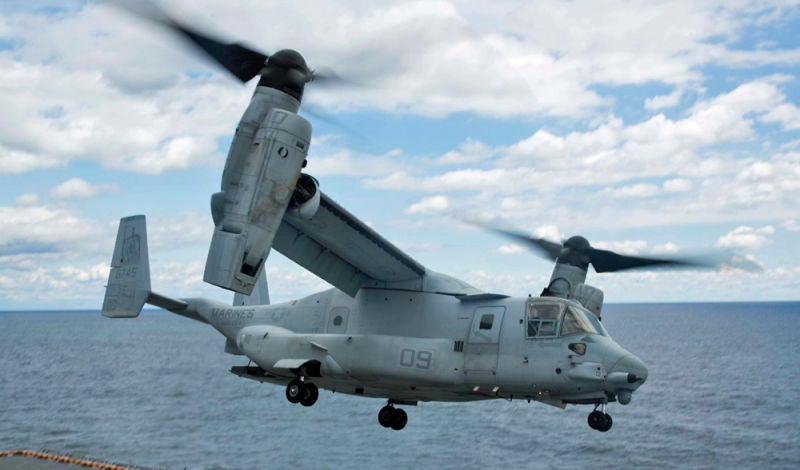
US Navy
March 19, 1989 – The first flight of the Bell Boeing V-22 Osprey. When the helicopter entered military service shortly after WWII, it revolutionized ground warfare. No longer were airstrips or dangerous parachute drops necessary to deliver troops to a combat theater, and an entirely new concept of vertical envelopment entered military doctrine. But the helicopter has its limitations, particularly in speed. Due to its design, a traditional helicopter is limited to about 250 mph, well under the speeds that are attainable by an airplane. For many years, aircraft designers sought to get the best of both worlds: an aircraft that can take off vertically like a helicopter, but then transition to horizontal flight like an airplane. Ideally, the rotors that lift the aircraft could then be used to pull it through the air.
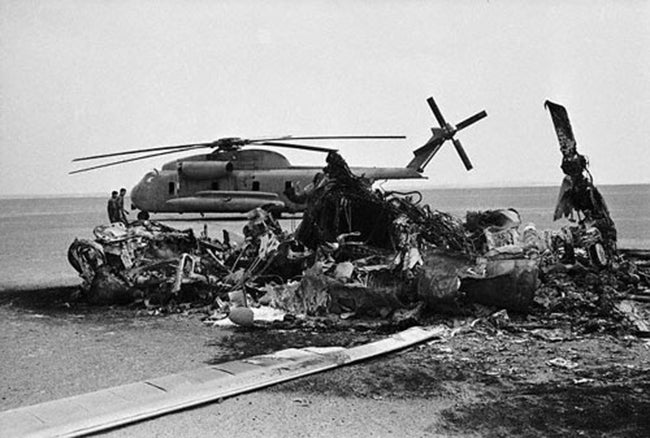 !!!CAPTION ERROR: MAY BE MULTI-LINE OR CONTAIN LINK!!!
!!!CAPTION ERROR: MAY BE MULTI-LINE OR CONTAIN LINK!!!
The problem of vertical or short takeoff flight (V/STOL) has been solved for smaller fighters such as the !!!error: Indecipherable SUB-paragraph formatting!!! , but V/STOL jets were never capable of carrying a useful payload of cargo or troops, though some !!!error: Indecipherable SUB-paragraph formatting!!! . But that all changed with the Osprey, when engine and control technology finally matured enough to develop a large aircraft that could make a meaningful contribution to military logistics and transport. The critical need for an aircraft such as the Osprey was demonstrated !!!error: Indecipherable SUB-paragraph formatting!!! , the disastrous attempt to rescue 52 American hostages being held at the American embassy in Tehran in 1980. At the time, the American fleet of large helicopters had neither the speed nor the range to carry out the rescue mission without highly orchestrated stops for fuel inside enemy territory, and an accident at a landing site lead to the deaths of nine personnel and the abandonment of the mission. What the Department of Defense desperately needed was an aircraft that could take off beyond the horizon, fly at high speed to a landing zone, then land vertically like a helicopter.
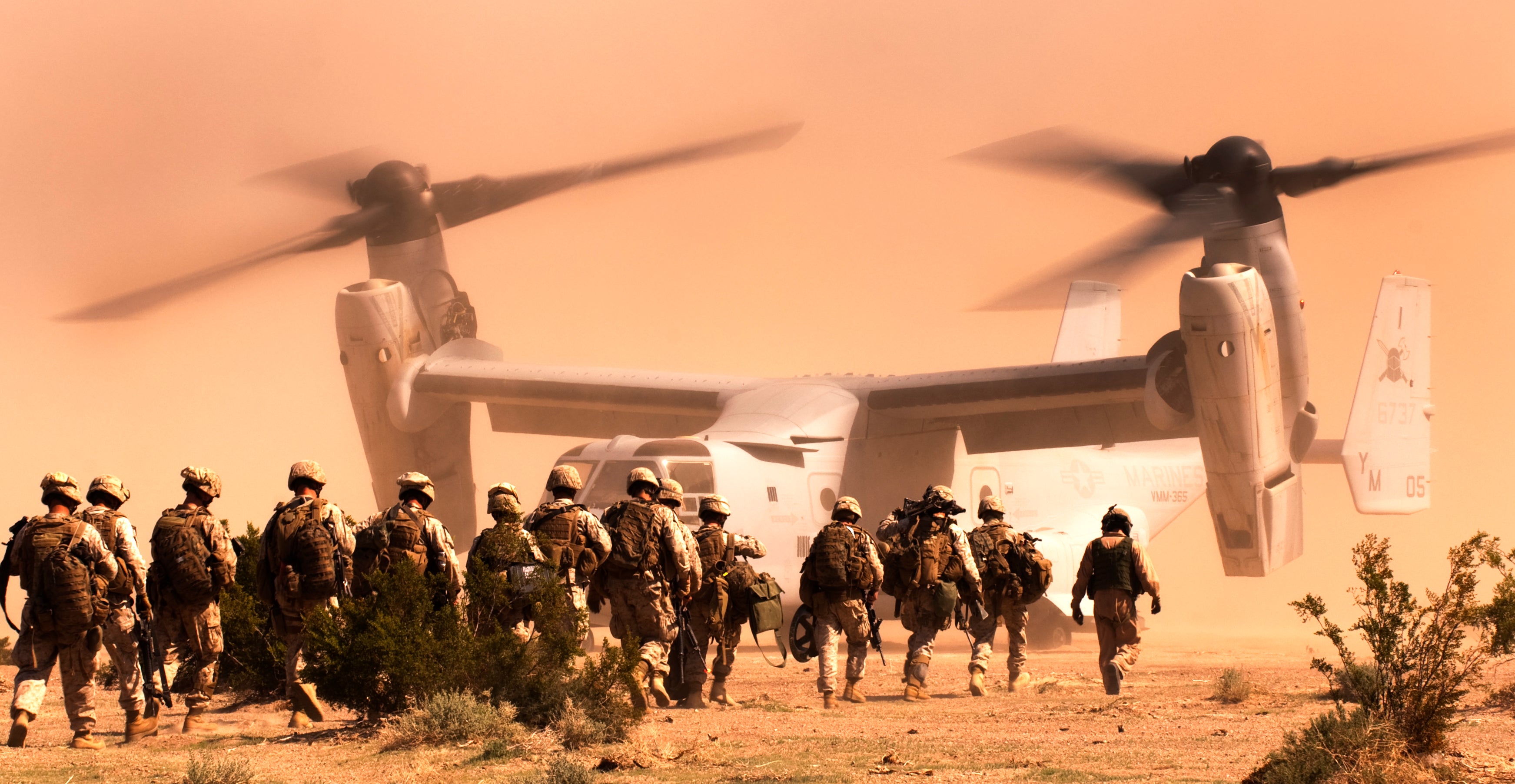
Marines and sailors from India Company, 3rd Battalion, 3rd Marine Regiment, make their way to a VMMT 365 MV-22 Osprey at Marine Corps Air Ground Combat Center Twentynine Palms, California (US Marine Corps)
The Osprey traces its lineage back to the !!!error: Indecipherable SUB-paragraph formatting!!! , which first flew in 1977 and proved that the tilting-nacelle concept could provide superior performance to traditional helicopters. In 1981, work began on the Joint-service Vertical take-off/landing Experimental program (JVX) to fill that need. The design called for a large fuselage for troops or materiel, with turbojet engines in rotating nacelles at the end of short wings. The US Navy and Marine Corps were the lead branches in the development of the JVX based on their specific operational needs, and !!!error: Indecipherable SUB-paragraph formatting!!! partnered with !!!error: Indecipherable SUB-paragraph formatting!!! to produce six prototypes of the Osprey. Following testing, full-scale production began in 1986. The Osprey entered service in 2007, and over 200 have been built to date.
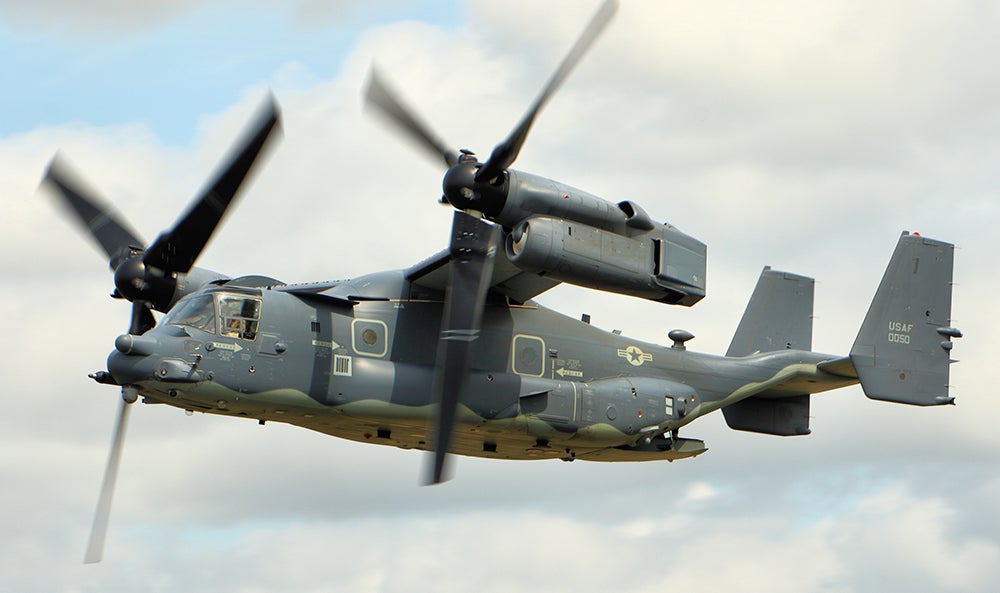 !!!CAPTION ERROR: MAY BE MULTI-LINE OR CONTAIN LINK!!!
!!!CAPTION ERROR: MAY BE MULTI-LINE OR CONTAIN LINK!!!
As with many modern military aircraft built entirely from scratch, cost overruns began to plague the Osprey, as well as a number of high-profile training accidents. Detractors believed that the Osprey was an inherently dangerous aircraft, particularly in the case of engine failure, even though one engine can drive both rotors through a system of interconnected drive shafts. Pilots also had to learn how to fly the Osprey, because it was neither an airplane nor a pure helicopter. !!!error: Indecipherable SUB-paragraph formatting!!! to Bell’s chief Osprey test pilot Bill Leonard.
One of the biggest problems we’ve had in the [pilot] community is getting past the idea that it’s a helicopter that flies fast. It’s not. It’s an airplane that hovers. And if you fly the airplane like a helicopter, yes, it’s very difficult to fly as a helicopter. And if you do that, you have a very good chance of having a problem with controllability because of the way the aircraft operates. If you fly it like an airplane and you are willing to take the time to understand the capabilities of it in helicopter, it’s a very, very easy airplane to fly. ( !!!error: Indecipherable SUB-paragraph formatting!!! )
Though crashes in the early years of development led to as many as 30 deaths (resulting from three crashes), the Osprey has since matured into an effective and safe aircraft, and the aircraft that critics once deemed unsafe now has a !!!error: Indecipherable SUB-paragraph formatting!!! that rivals traditional military rotorcraft. Marine Corps V-22s eventually replaced the venerable !!!error: Indecipherable SUB-paragraph formatting!!! , and were first deployed to Afghanistan in 2009, where they took part in their first combat missions and continue to see service there today. For the US Air Force, the CV-22 Osprey has also become valuable in special operations missions where their range and speed (up to 350 mph) aid in the rapid insertion of special forces, and work continues to develop the Osprey for the combat search and rescue (CSAR) role. The Navy also plans to use the Osprey to replace the !!!error: Indecipherable SUB-paragraph formatting!!! for Carrier Onboard Delivery (COD).
!!! UNKNOWN CONTENT TYPE !!!
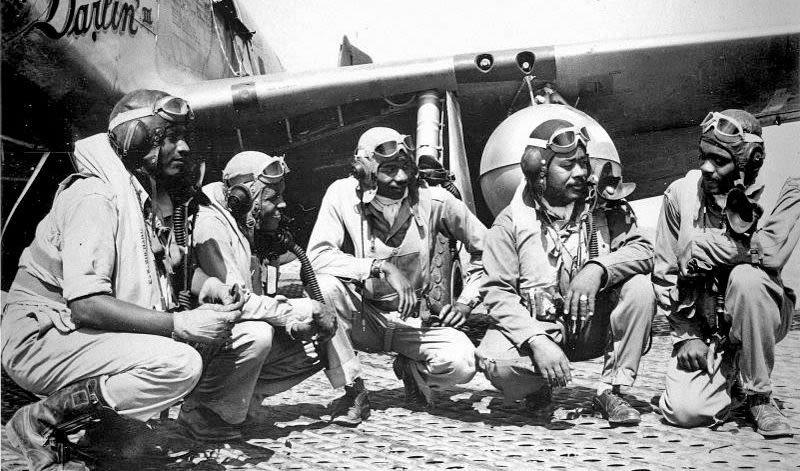
US Air Force
March 19, 1941 – The 99th Pursuit Squadron, better known as the Tuskegee Airmen, is constituted. If one were to look at photographs of WWII, it would be relatively easy to reach the conclusion that WWII was very much a white man’s war. However, when the war began, 2.5 million African American men registered for the draft, and at least 1 million went on to serve either as draftees or enlisted personnel in all the branches of the US military. However, with a few notable exceptions, the overwhelming majority were relegated to support roles such as cooks or drivers. The US military was still a segregated organization with African Americans serving in segregated units and, until the formation of the !!!error: Indecipherable SUB-paragraph formatting!!! , no African American had ever served as a military pilot.
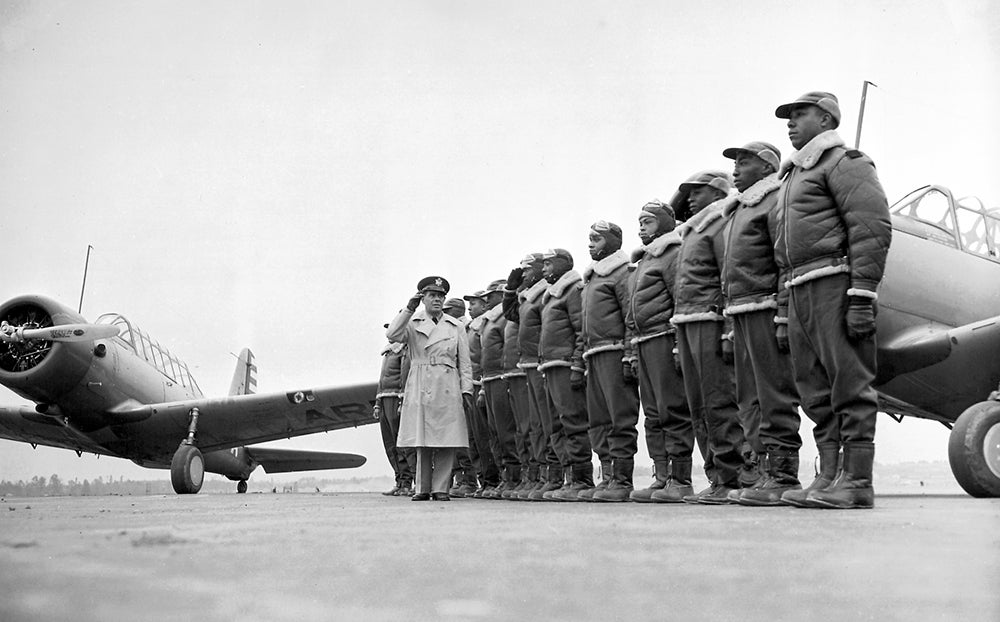
Maj James A. Ellison reviews first class of Tuskegee Airmen in 1941 (US Air Force)
By 1940, according to the US census, there were only 124 black pilots in all of the US. But in 1939, Congress passed the Civilian Pilot Training Act, and !!!error: Indecipherable SUB-paragraph formatting!!! in Alabama began training African American pilots as part of the !!!error: Indecipherable SUB-paragraph formatting!!! . In January 1941, the War Department announced plans to create a “Negro pursuit squadron” to be manned by graduates of the Tuskegee program, and the !!!error: Indecipherable SUB-paragraph formatting!!! was activated on March 22, 1941 at !!!error: Indecipherable SUB-paragraph formatting!!! in Illinois with 271 enlisted men trained in ground support. Pilot training for the 99th began the following June. Initially, the squadron included 47 officers and 429 enlisted men, but the unit was still segregated, and the construction contract for the base was awarded to an African American contractor. By April 1942, the 99th was considered ready for combat, and the squadron was sent to North Africa to be part of the 33rd Fighter Group.
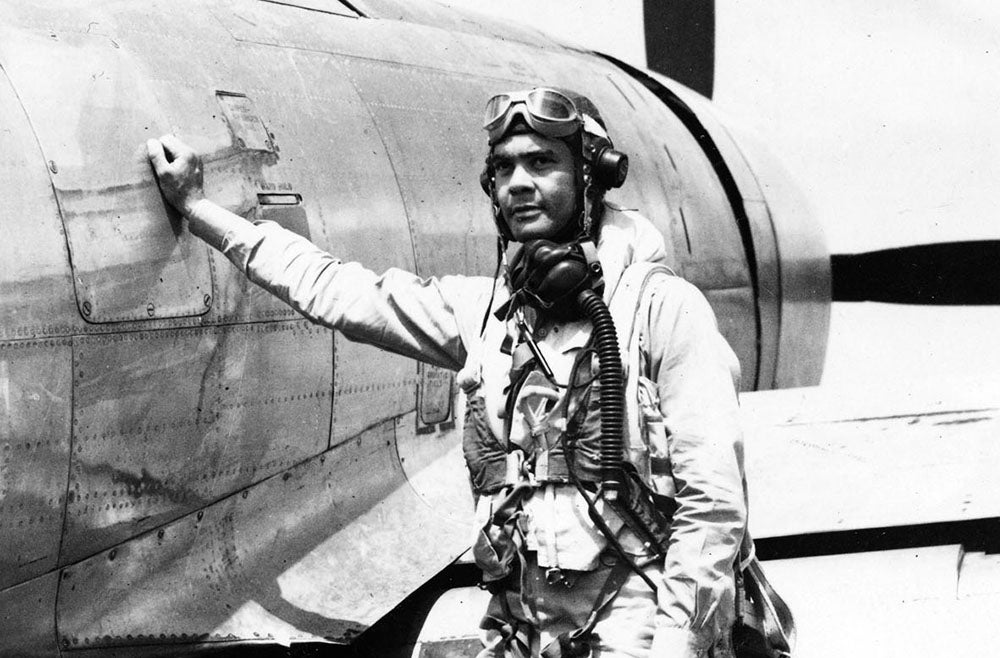 !!!CAPTION ERROR: MAY BE MULTI-LINE OR CONTAIN LINK!!!
!!!CAPTION ERROR: MAY BE MULTI-LINE OR CONTAIN LINK!!!
The Tuskegee Airmen, nicknamed the Red Tails due to the distinctive red paint on the empennage of their !!!error: Indecipherable SUB-paragraph formatting!!! flew their first combat mission against a strategic island in the Mediterranean Sea in the run up to the !!!error: Indecipherable SUB-paragraph formatting!!! . During the !!!error: Indecipherable SUB-paragraph formatting!!! , the 99th provided close air support for the US 5th Army at Foggia and during the !!!error: Indecipherable SUB-paragraph formatting!!! , and for French and Polish forces during the !!!error: Indecipherable SUB-paragraph formatting!!! . On July 2, 1943, 1st Lt. Charles Hall of the 99th claimed the first enemy aircraft destroyed by a Tuskegee Airman when he downed a German !!!error: Indecipherable SUB-paragraph formatting!!! over southwestern Sicily.
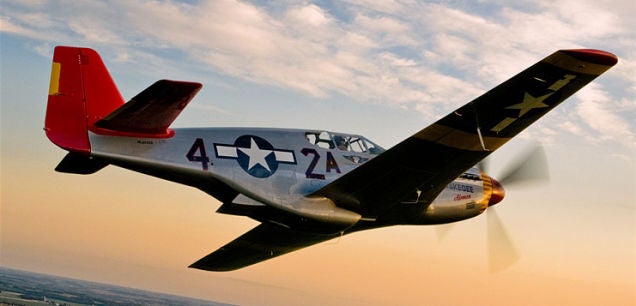 !!!CAPTION ERROR: MAY BE MULTI-LINE OR CONTAIN LINK!!!
!!!CAPTION ERROR: MAY BE MULTI-LINE OR CONTAIN LINK!!!
The 99th continued to escort bombers and provide air cover during the Italian campaign, and the squadron was awarded the first of three !!!error: Indecipherable SUB-paragraph formatting!!! during the period June-July 1943 for its actions during the landings on Sicily. In all, the 99th flew over 15,000 sorties and lost 66 pilots in combat, one of the lowest loss rates in the US Army Air Forces. The exemplary service of the Tuskegee Airmen, along with that of other African American servicemen, helped bring about the integration of the US military on July 26, 1948, when President Harry S. Truman issued !!!error: Indecipherable SUB-paragraph formatting!!! stating in part that “there shall be equality of treatment and opportunity for all persons in the armed forces without regard to race, color, religion, or national origin.”
!!! UNKNOWN CONTENT TYPE !!!
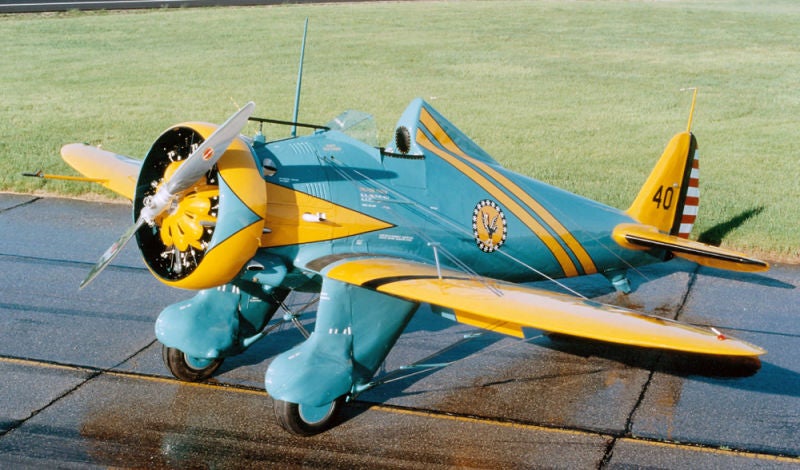
US Air Force
March 20, 1932 – The first flight of the Boeing P-26 Peashooter. When the airplane first went to war in 1914, the predominant design was the biplane, a wood- or metal-framed structure covered by fabric. But as aircraft design progressed in the 1920s and 1930s, advances in construction and aerodynamics led to the monoplane. With only one wing and no struts or braces, the reduction in drag meant increased speeds, though many of the early monoplanes still used traditional frame and fabric construction techniques. The Germans had made advances with metal monoplanes as early as 1915 with the all-metal !!!error: Indecipherable SUB-paragraph formatting!!! , but its weight (more than one ton) limited its performance when powered by the engines of its day. But by the 1930s, it was clear that the metal monoplane was the future of military aviation, and while the Boeing P-26 wasn’t the first metal monoplane to be considered by the US Army Air Corps, it was the first to enter production and service.
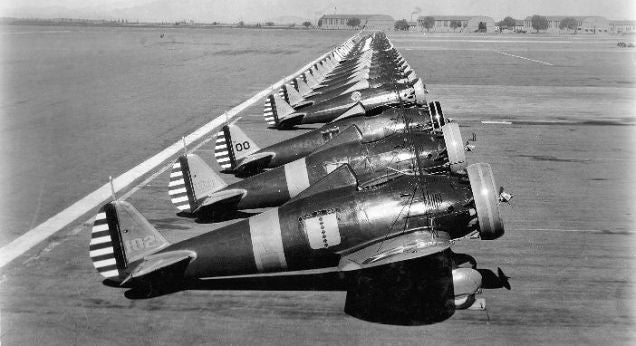
Peashooters of the 17th Pursuit Group lined up at March Field in California (US Air Force)
PDevelopment of the P-26 began in 1931 with an internally funded Boeing project known as the Model 248. For that aircraft, the Army supplied the engines and instruments while Boeing built the airframe. The 248, though a monoplane, still employed many of the design elements found in earlier aircraft, such as fixed landing gear and external wire bracing to keep the wings from buckling. Its small wings also led to an unacceptably high landing speed, which caused a number of crashes, and the Peashooter’s short nose meant that it had a tendency to pitch forward on landing, injuring or killing the pilot. These problems were addressed by the addition of flaps to lower the landing speed, and a raised headrest to protect the pilot should the plane flip over. Two different engines were used in the P-26A and P-26B before the Army settled on a carbureted !!!error: Indecipherable SUB-paragraph formatting!!! radial fitted with a !!!error: Indecipherable SUB-paragraph formatting!!! to help reduce drag and improve cooling.
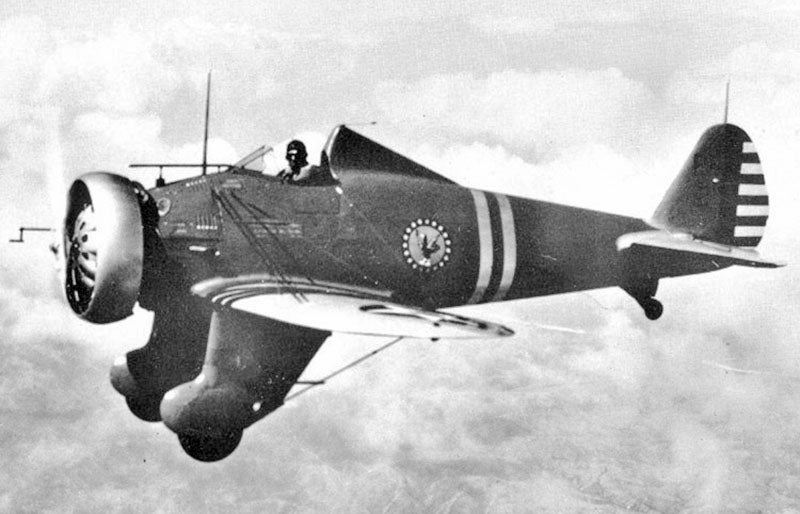
Boeing P-26 of the 19th Pursuit Squadron (US Air Force)
The USAAC ordered 111 P-26As, followed by orders for the improved B and C models, and took delivery of the first Peashooters in 1934. At the time of its introduction, the Peashooter was the fastest fighter in the American inventory with a top speed of 234 mph. But rapid advances in aircraft design in the 1930s soon rendered the P-26 somewhat of an anachronism. Fighters such as the !!!error: Indecipherable SUB-paragraph formatting!!! and !!!error: Indecipherable SUB-paragraph formatting!!! were just three years away, much more modern aircraft with enclosed cockpits, retractable landing gear and !!!error: Indecipherable SUB-paragraph formatting!!! . Nevertheless, the P-26 proved easy to fly, and it remained in service until the outbreak of WWII. Though the Peashooter never saw combat with American forces, fighters exported to China saw action against the Japanese in 1937, where they were responsible for downing a handful of bombers, and members of the Philippine Army Air Corps had limited success against Japanese fighters in 1941. A total of 141 Peashooters of all variants were produced, and it was the last fighter produced by Boeing until the company acquired McDonnell Douglas in 1997.
!!! UNKNOWN CONTENT TYPE !!!
Short Takeoff
!!! UNKNOWN CONTENT TYPE !!!
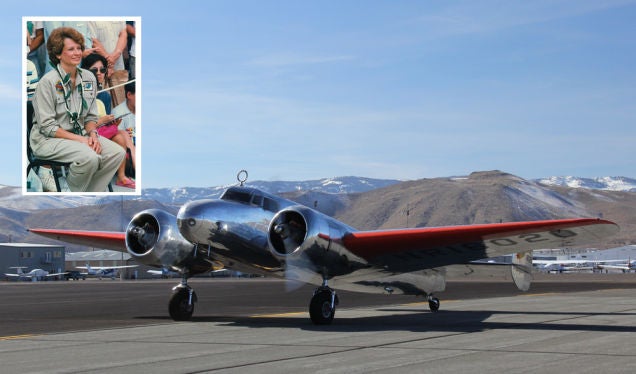 !!!CAPTION ERROR: MAY BE MULTI-LINE OR CONTAIN LINK!!!
!!!CAPTION ERROR: MAY BE MULTI-LINE OR CONTAIN LINK!!!
March 17, 1997 – Linda Finch takes off on a flight to recreate and complete the ill-fated round-the-world flight of Amelia Earhart. Finch, an aviatrix and businesswoman from San Antonio, TX, took off in a restored 1935 !!!error: Indecipherable SUB-paragraph formatting!!! that had been prepared identically to Earhart’s plane. Finch’s flight took 10 weeks to complete while flying legs of 8 to 18 hours at a time, stopped at 36 different locations in 18 countries, and covered approximately 26,000 miles. Finch’s Electra has been acquired by the !!!error: Indecipherable SUB-paragraph formatting!!! in Seattle, Washington where it will be displayed. It should be noted that March 17 is the departure date for Earhart’s first attempt at circumnavigation of the globe. The second attempt, in which Earhart and copilot Fred Noonan disappeared, began on July 2, 1937.
!!! UNKNOWN CONTENT TYPE !!!
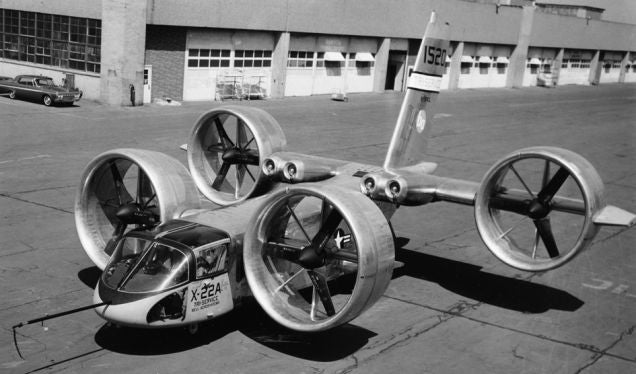 !!!CAPTION ERROR: MAY BE MULTI-LINE OR CONTAIN LINK!!!
!!!CAPTION ERROR: MAY BE MULTI-LINE OR CONTAIN LINK!!!
March 17, 1966 – The first flight of the Bell X-22, an experimental !!!error: Indecipherable SUB-paragraph formatting!!! (V/STOL) aircraft. Lift was provided by four large ducted fans driven by four !!!error: Indecipherable SUB-paragraph formatting!!! turboshaft engines grouped on the rear wing. Developed to investigate the use of V/STOL takeoff aircraft for the transport of troops and cargo, the X-22 successfully transitioned from vertical to forward flight soon after its maiden flight, but a crash six months later led to the loss of the first prototype. Though it was the most successful aircraft of its type at the time, the hoped-for speed of 315 mph was never achieved and the project was canceled. The second prototype, the X-22A, is now on display at the !!!error: Indecipherable SUB-paragraph formatting!!! in New York.
!!! UNKNOWN CONTENT TYPE !!!
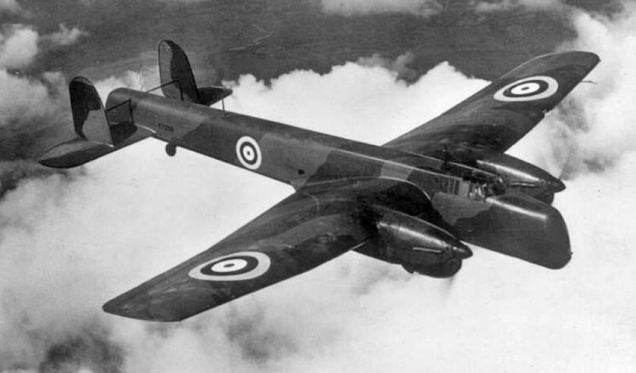
Royal Air Force
March 17, 1936 – The first flight of the Armstrong Whitworth Whitley, one of three twin-engine medium bombers to serve the Royal Air Force during WWII. The Whitley was introduced in 1937 to replace the !!!error: Indecipherable SUB-paragraph formatting!!! biplane bomber, and took part in the first RAF bombing raids of the German homeland, though it was essentially obsolete by the start of the war in 1939. Following the introduction of larger, four-engine bombers, the Whitley was retired from frontline service in 1942 and relegated to maritime reconnaissance duties. It also served as a glider tug, trainer and transport aircraft. A total of 1,814 Whitleys were produced, and the bomber was fully retired at the end of the war.
!!! UNKNOWN CONTENT TYPE !!!
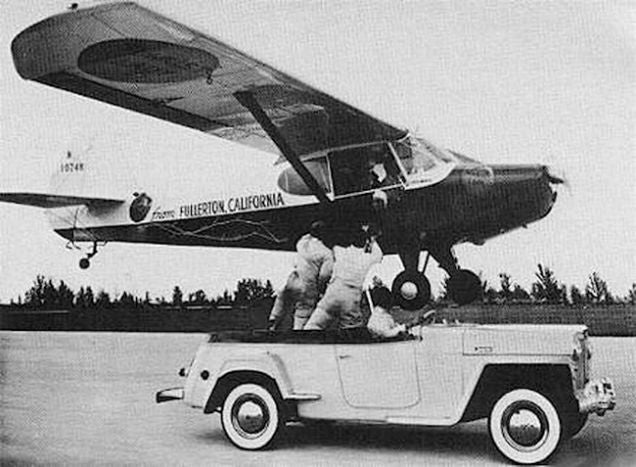 !!!CAPTION ERROR: MAY BE MULTI-LINE OR CONTAIN LINK!!!
!!!CAPTION ERROR: MAY BE MULTI-LINE OR CONTAIN LINK!!!
N1331HMarch 17, 1949 – The Sunkist Lady takes off to set an endurance record, remaining in the air for 1,008 hours. In an attempt to break the previous endurance record of 726 hours set in 1939, pilots Dick Reidel and Bill Barris of the Fullerton Air Service flew their modified !!!error: Indecipherable SUB-paragraph formatting!!! from Fullerton, California to Miami Florida, where they circled for 14 days before returning to California. There, they remained aloft over Southern California until the record was broken. The pilots were supplied with food and fuel by vehicles driving along a runway as they descended, and supplies were handed up to the crew. By the time Reidel and Barris landed on April 26, they had covered more than 75,600 land miles and used 6,552 gallons of fuel.
!!! UNKNOWN CONTENT TYPE !!!
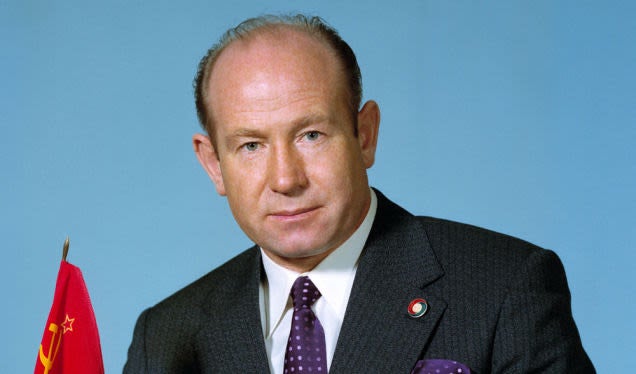
NASA
March 18, 1965 – Cosmonaut Alexei Leonov becomes the first person to “walk” in space. Leonov was one of 20 Soviet Air Force pilots selected as the first cosmonauts in 1960, and his first flight to space was on board !!!error: Indecipherable SUB-paragraph formatting!!! as part of Russia’s manned space program. During Leonov’s 12-minute-long extravehicular activity (EVA), a defect in the design of his spacesuit caused it to inflate to the point where he could not re-enter the capsule. He had to release a pressure valve on the suit and only then just barely made it back inside. Leonov returned to space for the second and last time in 1975 as commander of Soyuz 19, part of the !!!error: Indecipherable SUB-paragraph formatting!!! in which a Soviet and an American space capsule docked together in space to mark the symbolic end of the !!!error: Indecipherable SUB-paragraph formatting!!! .
!!! UNKNOWN CONTENT TYPE !!!
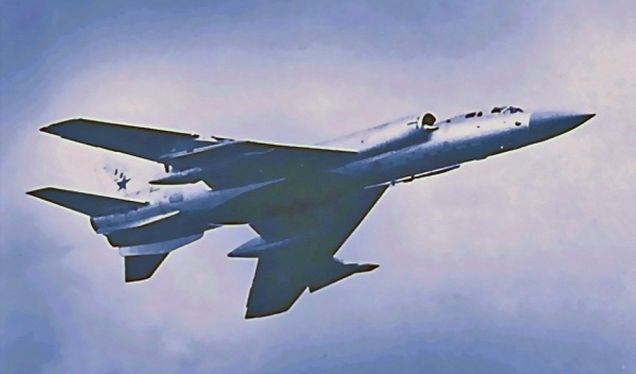
US Navy
March 18, 1961 – The first flight of the Tupolev Tu-28, a long-range interceptor introduced to the Soviet Air Force in the late 1960s and the largest interceptor to fulfill that role ever to enter service. To protect Russia’s vast territory, Tupolev designed a supersonic interceptor with an enormous fuel load, radar, and the best air-to-air missiles available at the time. The Tu-28, also called Tu-128 by the Soviets, was never intended as a dogfighter; rather, it’s mission was to intercept American bombers such as the !!!error: Indecipherable SUB-paragraph formatting!!! . The Tu-28 had an estimated top speed of Mach 1.5 and a range of 1,600 miles, but could not fly above 15,600 feet when armed. Just under 200 were built, and the type was retired in 1990.
!!! UNKNOWN CONTENT TYPE !!!
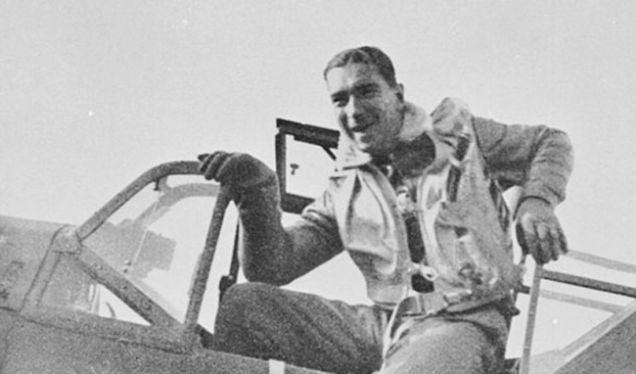 !!!CAPTION ERROR: MAY BE MULTI-LINE OR CONTAIN LINK!!!
!!!CAPTION ERROR: MAY BE MULTI-LINE OR CONTAIN LINK!!!
March 18, 1913 – The birth of Werner Mölders, a WWII Luftwaffe fighter pilot and the leading German ace of the !!!error: Indecipherable SUB-paragraph formatting!!! . During Mölder’s brief career, he became the first fighter pilot in history to achieve 100 combat victories, and was also instrumental in the development of the !!!error: Indecipherable SUB-paragraph formatting!!! combat formation. After fighting in Spain, Molders took part in the !!!error: Indecipherable SUB-paragraph formatting!!! and !!!error: Indecipherable SUB-paragraph formatting!!! before being sent to the !!!error: Indecipherable SUB-paragraph formatting!!! during !!!error: Indecipherable SUB-paragraph formatting!!! , the German invasion of Russia. In July 1941, Mölders was removed from combat and named Inspector General of Fighters, where he oversaw the training and tactics of German fighter pilots. On November 22, 1941, Mölders was flying as a passenger in a !!!error: Indecipherable SUB-paragraph formatting!!! to attend the funeral of !!!error: Indecipherable SUB-paragraph formatting!!! when the plane crashed near Breslau while attempting a landing in bad weather. Mölders was 28 years old at the time of his death.
!!! UNKNOWN CONTENT TYPE !!!
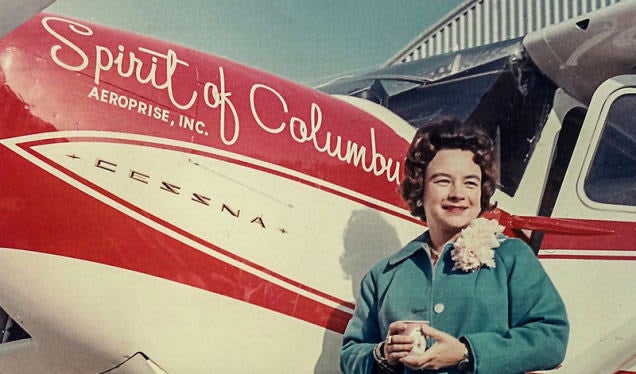 !!!CAPTION ERROR: MAY BE MULTI-LINE OR CONTAIN LINK!!!
!!!CAPTION ERROR: MAY BE MULTI-LINE OR CONTAIN LINK!!!
March 19, 1964 – Geraldine Mock becomes the first woman to fly around the world. Piloting a single-engine !!!error: Indecipherable SUB-paragraph formatting!!! (N1538C) named Spirit of Columbus , Mock took off on March 19 from Columbus, Ohio and completed the flight on April 17 after 29 days. The flight included 21 stopovers and covered 22,860 miles. In recognition of this feat, Mock was awarded the !!!error: Indecipherable SUB-paragraph formatting!!! from the !!!error: Indecipherable SUB-paragraph formatting!!! in 1965. In 1970, Mock published a book about her trip titled Three-Eight Charlie . She also holds numerous speed and distance records for a woman pilot, was the first to fly across the Pacific Ocean in a single-engine aircraft, and the first to cross both oceans. Her Cessna now resides at the Smithsonian’s !!!error: Indecipherable SUB-paragraph formatting!!! .
!!! UNKNOWN CONTENT TYPE !!!
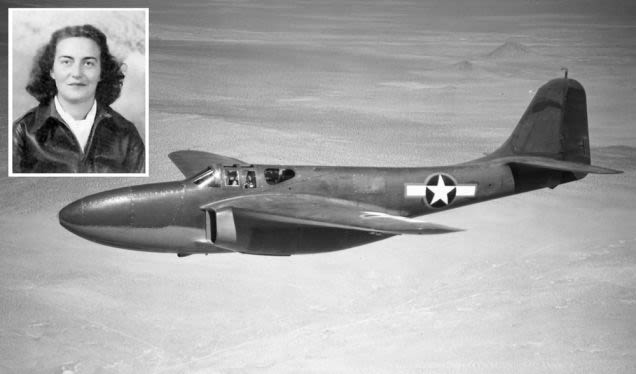
US Air Force
March 20, 2008 – The death of Ann Baumgartner, the first American woman to fly a jet fighter.
Born in Augusta, Georgia in 1918, Baumgartner was a pilot with the
!!!error: Indecipherable SUB-paragraph formatting!!!
(WASP) program which was tasked with ferrying new aircraft from factories in the US to points of embarkation around the country. In February 1944, Baumgartner transferred to Wright Field in Ohio on a temporary assignment to test aeromedical equipment, eventually becoming assistant operations officer for the WASPs at Wright Field. On October 14, 1944, Baumgartner flew the
!!!error: Indecipherable SUB-paragraph formatting!!!
, America’s first jet fighter, as part of her testing duties. Following the disbanding of the WASPs in 1944, Baumgartner continued to work as a flight instructor for United Airlines.
!!! UNKNOWN CONTENT TYPE !!!
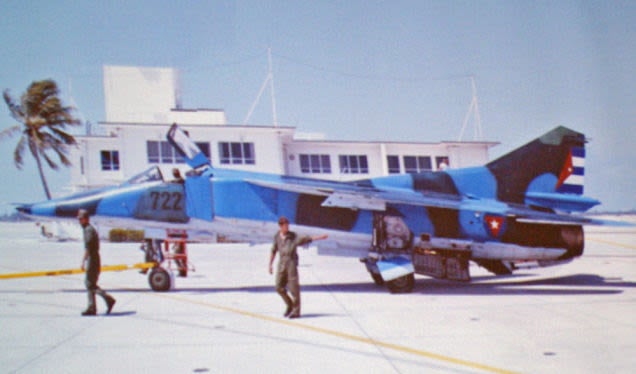 !!!CAPTION ERROR: MAY BE MULTI-LINE OR CONTAIN LINK!!!
!!!CAPTION ERROR: MAY BE MULTI-LINE OR CONTAIN LINK!!!
March 20, 1991 – Cuban Air Force pilot Maj. Orestes Lorenzo Perez defects to the US in a Russian-built fighter.
While on a training mission, Perez turned his
!!!error: Indecipherable SUB-paragraph formatting!!!
toward Florida and landed at Naval Air Station Key West uncontested. To the embarrassment of the US Air Force, defense radars failed to pick up the airplane and no fighters were scrambled. The MiG was eventually returned to Cuba, and Perez was given asylum in the US. The following year, Perez flew back to Cuba in a
!!!error: Indecipherable SUB-paragraph formatting!!!
and landed on a busy highway to pick up his wife and two sons who had been told that he would be returning for them. Orestes then flew back to the US, where his family was also granted asylum.
!!! UNKNOWN CONTENT TYPE !!!
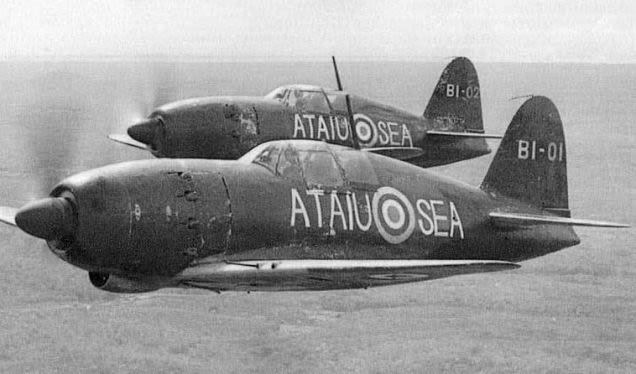
Captured J2Ms in RAF markings (UK Government)
March 20, 1942 – The first flight of the Mitsubishi J2M
Raiden
(
Thunderbolt
),
Allied reporting name
Jack
. The
Raiden
was designed by
!!!error: Indecipherable SUB-paragraph formatting!!!
, who had also designed the
!!!error: Indecipherable SUB-paragraph formatting!!!
, and was built to be a local defense interceptor to protect the Japanese home island from American bombers. The J2M first saw action in 1944 during the
!!!error: Indecipherable SUB-paragraph formatting!!!
, but its lack of a turbocharger meant that it had difficultly engaging the high-flying
!!!error: Indecipherable SUB-paragraph formatting!!!
, though its armament of four cannons was potent, and it was occasionally effective in diving attacks. A total of 671
Raidens
were built, and it was retired at the end of the war.
!!! UNKNOWN CONTENT TYPE !!!
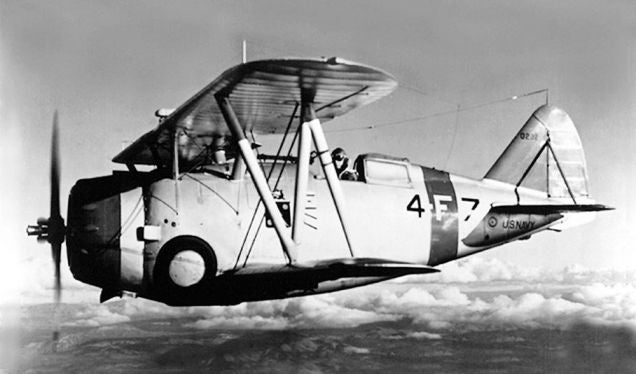
US Navy
March 20, 1935 – The first flight of the Grumman F3F,
the last biplane fighter delivered to the US Navy. Designed to replace the
!!!error: Indecipherable SUB-paragraph formatting!!!
, the F3F entered service in 1936, but was removed from frontline service in 1941 at the beginning of the war. It was replaced by the
!!!error: Indecipherable SUB-paragraph formatting!!!
, though a number of F3Fs continued to fly in a training role. The F3F also served the US Army Air Force as a trainer with the designation UC-103. Though the F3F performed the bulk of its service before the war and was obsolete by 1941, it formed the developmental basis for the
!!!error: Indecipherable SUB-paragraph formatting!!!
, the mainstay Naval fighter in the early years of WWII.
!!! UNKNOWN CONTENT TYPE !!!
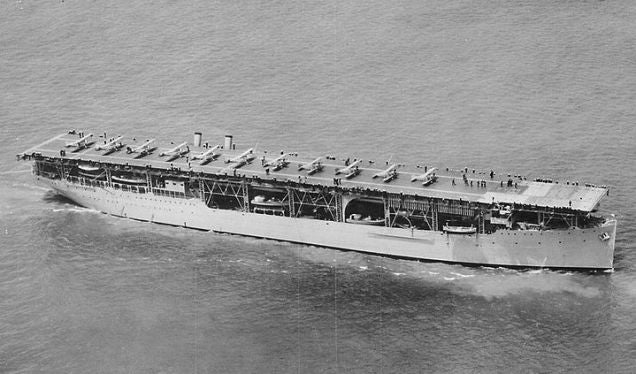
US Navy
March 20, 1922 The US Navy commissions the USS Langley (CV-1) , its first aircraft carrier. Converted from the collier USS Jupiter , Langley was also the US Navy’s first !!!error: Indecipherable SUB-paragraph formatting!!! ship. Langley was converted at the Navy Yard in Norfolk, Virginia and named after American aviation pioneer !!!error: Indecipherable SUB-paragraph formatting!!! . The first plane to fly from her deck was a !!!error: Indecipherable SUB-paragraph formatting!!! flown by Lt. Virgil Griffin on October 17, 1922. After serving off the California coast for 12 years, Langley was converted to a seaplane tender (AV-3) and served in the early part of WWII, but had to be scuttled following an attack by Japanese dive bombers on February 27, 1942.
!!! UNKNOWN CONTENT TYPE !!!
Connecting Flights
!!! UNKNOWN CONTENT TYPE !!!
!!! UNKNOWN CONTENT TYPE !!!
!!! UNKNOWN CONTENT TYPE !!!
!!! UNKNOWN CONTENT TYPE !!!
!!! UNKNOWN CONTENT TYPE !!!
If you enjoy these Aviation History posts, please let me know in the comments. And if you missed any of the past articles, you can find them all at
!!!error: Indecipherable SUB-paragraph formatting!!!
. You can also find more stories about aviation, aviators and airplane oddities at
!!!error: Indecipherable SUB-paragraph formatting!!!
.
!!! UNKNOWN CONTENT TYPE !!!
 For Sweden
> ttyymmnn
For Sweden
> ttyymmnn
03/20/2018 at 12:45 |
|
Marvel: Infinity War is the most ambitious crossover event in history.
Me:
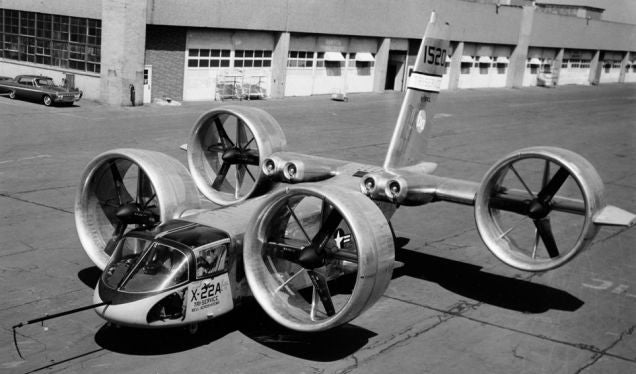
 HammerheadFistpunch
> ttyymmnn
HammerheadFistpunch
> ttyymmnn
03/20/2018 at 12:58 |
|
I’ve always loved the V22, from way back when. Im eagerly keeping my eye on the AW609. That is going to be a killer SAR machine.
 ttyymmnn
> HammerheadFistpunch
ttyymmnn
> HammerheadFistpunch
03/20/2018 at 13:04 |
|
I agree. Sadly, it’s already killed 2 pilots. It’s amazing how relatively safe test piloting has become, but it’s still a dangerous gig. The V-280 is coming soon, too. I can’t even imagine the complexity of having only the rotor heads swivel vs. the whole engine nacelle.
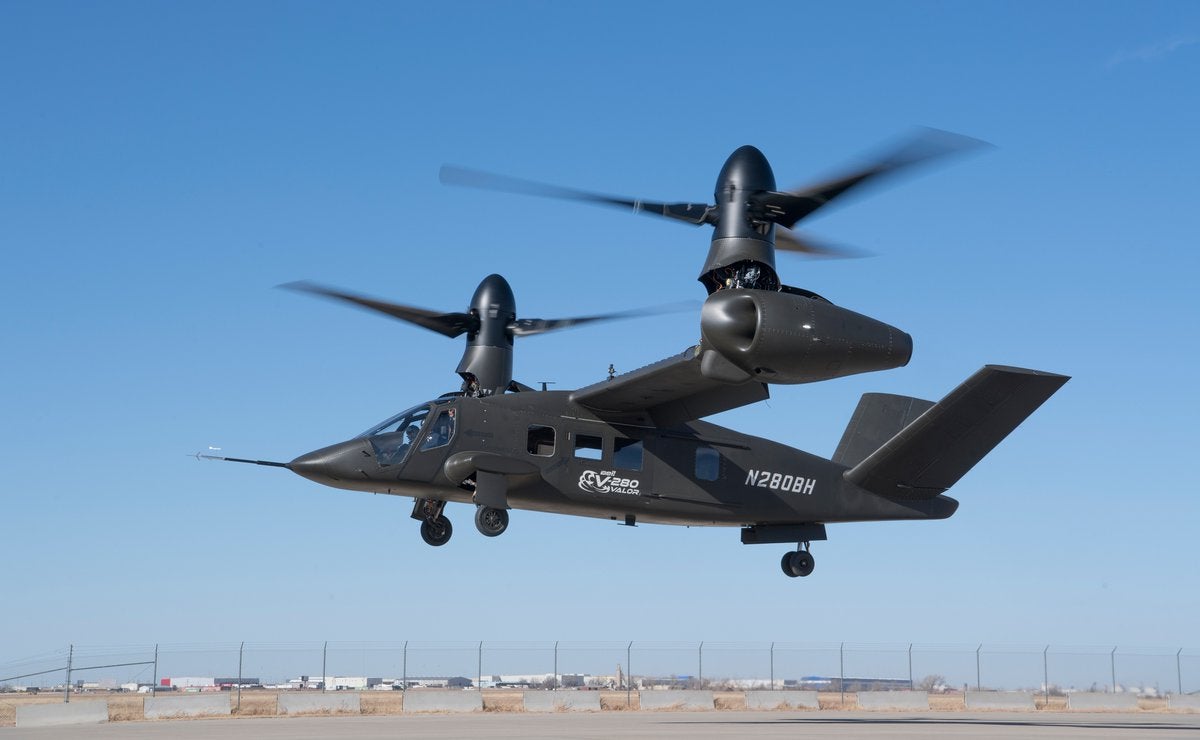
 HammerheadFistpunch
> ttyymmnn
HammerheadFistpunch
> ttyymmnn
03/20/2018 at 13:08 |
|
That stinks, I didn’t know that.
 Smallbear wants a modern Syclone, local Maple Leafs spammer
> ttyymmnn
Smallbear wants a modern Syclone, local Maple Leafs spammer
> ttyymmnn
03/20/2018 at 13:15 |
|
Re the Tornado, every time I see a picture it looks tiny. Between the fighter-style canopy and the wing mounted engines being doubled up, it looks exactly like a period fighter. Sleeker, actually. Fools me every time until I see the glass nose and four engines.
Re the P26, iirc that was the last fighter Boeing ever produced? I seem to remember something about the X-32 potentially being their first since the 1930's. Could be wrong on that.
 ttyymmnn
> Smallbear wants a modern Syclone, local Maple Leafs spammer
ttyymmnn
> Smallbear wants a modern Syclone, local Maple Leafs spammer
03/20/2018 at 13:19 |
|
Produced ? I think you may be right. There was the XF88 , but that never entered production.
 ttyymmnn
> HammerheadFistpunch
ttyymmnn
> HammerheadFistpunch
03/20/2018 at 13:20 |
|
https://en.wikipedia.org/wiki/AgustaWestland_AW609#Notable_accidents_and_incidents
 Smallbear wants a modern Syclone, local Maple Leafs spammer
> ttyymmnn
Smallbear wants a modern Syclone, local Maple Leafs spammer
> ttyymmnn
03/20/2018 at 13:32 |
|
Yeah, I was thinking of fighters that actually earned a production contract.
 ttyymmnn
> Smallbear wants a modern Syclone, local Maple Leafs spammer
ttyymmnn
> Smallbear wants a modern Syclone, local Maple Leafs spammer
03/20/2018 at 13:37 |
|
Well, the Super Hornet is technically a Boeing product. Of course, they didn’t design it.
 Smallbear wants a modern Syclone, local Maple Leafs spammer
> ttyymmnn
Smallbear wants a modern Syclone, local Maple Leafs spammer
> ttyymmnn
03/20/2018 at 13:42 |
|
Yeah... barely. I guess it counts though.
I suppose since the demise of McDonnell-Douglas and sale to Boeing was a direct result of the JSF project it was an “accurate at the time of” statement.
 facw
> ttyymmnn
facw
> ttyymmnn
03/20/2018 at 13:43 |
|
Regarding the Osprey, one thing that surprised me when I was doing my arbitrary ranking of VTOL/STOVL aircraft is how many previous tilt-rotor aircraft there were. Seems like only the CL-84 got anywhere close to production though.
 user314
> ttyymmnn
user314
> ttyymmnn
03/20/2018 at 13:46 |
|
The first flight of the Tupolev Tu-28, a long-range interceptor introduced to the Soviet Air Force in the late 1960s and the largest interceptor to fulfill that role ever to enter service.
See, if only we’d produced the F-12B:
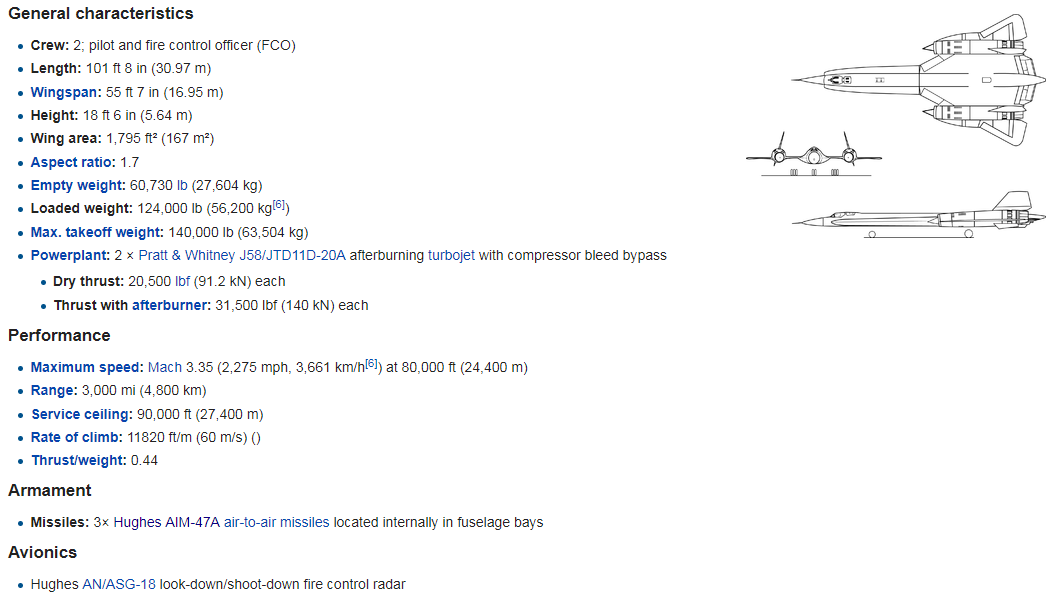
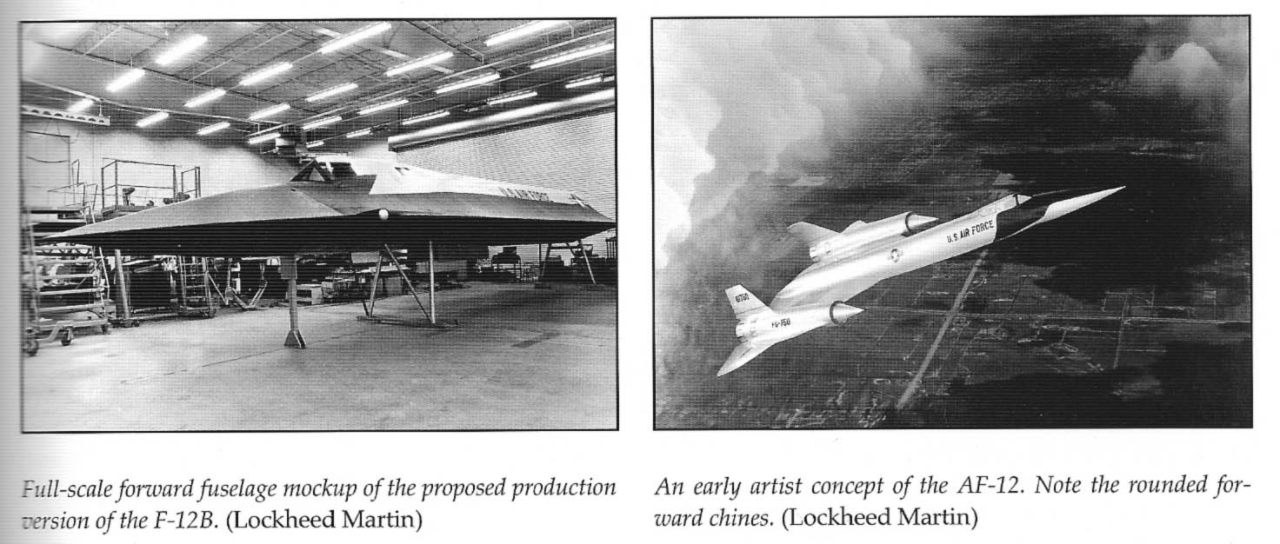
 ttyymmnn
> facw
ttyymmnn
> facw
03/20/2018 at 13:50 |
|
I was thinking of doing an article about the Osprey’s predecessors, but you beat me to it! I think it was always a worth idea, but one that was simply waiting for technology to catch up.
 ttyymmnn
> user314
ttyymmnn
> user314
03/20/2018 at 13:53 |
|
That was a wild time of rapid transition from waves of bombers to waves of ICBMs. A lot of great ideas got passed up simply because they couldn’t be built fast enough.
 You can tell a Finn but you can't tell him much
> ttyymmnn
You can tell a Finn but you can't tell him much
> ttyymmnn
03/20/2018 at 13:59 |
|
The story of Maj. Orestes Lorenzo Perez is amazing. I can’t remember if there was a write up here a while back about that, or if I saw something on Youtube or TV showing his flights.
https://www.nytimes.com/1992/12/21/us/cuban-pilot-who-defected-flies-back-for-family.html
 Derpwagon
> ttyymmnn
Derpwagon
> ttyymmnn
03/20/2018 at 14:00 |
|
Another great one. Thanks!
 ttyymmnn
> You can tell a Finn but you can't tell him much
ttyymmnn
> You can tell a Finn but you can't tell him much
03/20/2018 at 14:01 |
|
I posted this story last year, and there was a lot of discussion about it, and some videos posted. Perhaps you remember that. A great story indeed.
 ttyymmnn
> Derpwagon
ttyymmnn
> Derpwagon
03/20/2018 at 14:02 |
|
You’re welcome! And thanks for reading.
 Rock Bottom
> ttyymmnn
Rock Bottom
> ttyymmnn
03/21/2018 at 00:15 |
|
If you ever do, my meager contribution from a few years back may help!
https://oppositelock.kinja.com/a-brief-history-of-the-tilt-rotor-aircraft-1437462277
 polarbexer
> ttyymmnn
polarbexer
> ttyymmnn
03/25/2018 at 22:23 |
|
The 99th still lives on, the unit is out of Randolph AFB TX flying T-1 now. Up until 1993 they were flying T-38 at Williams AFB until it closed.
 ttyymmnn
> polarbexer
ttyymmnn
> polarbexer
03/25/2018 at 22:27 |
|
The 1st Aero Squadron , the US military’s oldest aviation unit, dating back to 1913, is also still in business.